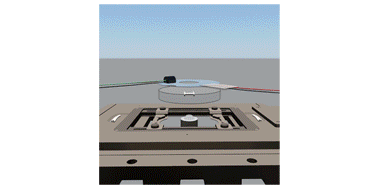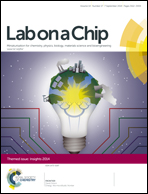Time lapse investigation of antibiotic susceptibility using a microfluidic linear gradient 3D culture device†
Abstract
This study reports a novel approach to quantitatively investigate the antibacterial effect of antibiotics on bacteria using a three-dimensional microfluidic culture device. In particular, our approach is suitable for studying the pharmacodynamics effects of antibiotics on bacterial cells temporally and with a continuous range of concentrations in a single experiment. The responses of bacterial cells to a linear concentration gradient of antibiotics were observed using time-lapse photography, by encapsulating bacterial cells in an agarose-based gel located in a commercially available microfluidics chamber. This approach generates dynamic information with high resolution, in a single operation, e.g., growth curves and antibiotic pharmacodynamics, in a well-controlled environment. No pre-labelling of the cells is needed and therefore any bacterial sample can be tested in this setup. It also provides static information comparable to that of standard techniques for measuring minimum inhibitory concentration (MIC). Five antibiotics with different mechanisms were analysed against wild-type Escherichia coli, Staphylococcus aureus and Salmonella Typhimurium. The entire process, including data analysis, took 2.5–4 h and from the same analysis, high-resolution growth curves were obtained. As a proof of principle, a pharmacodynamic model of streptomycin against Salmonella Typhimurium was built based on the maximal effect model, which agreed well with the experimental results. Our approach has the potential to be a simple and flexible solution to study responding behaviours of microbial cells under different selection pressures both temporally and in a range of concentrations.


 Please wait while we load your content...
Please wait while we load your content...